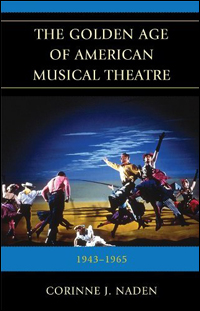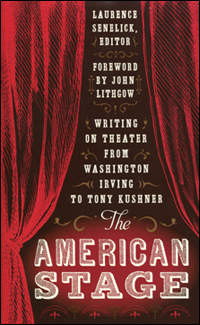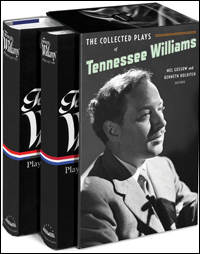*
 |
There are any number of books discussing the Broadway musical, of all eras and all aspects. Information about Off-Broadway musicals, though, is extremely difficult to come by. The most celebrated of these tuners — hits like The Threepenny Opera, The Fantasticks, Godspell, A Chorus Line, Little Shop of Horrors — are duly included in various musical theatre histories, and for good reason. But try, just try, to find information on Riverwind, All in Love, Promenade, Valmouth, Your Own Thing, The Me Nobody Knows, the numerous Julius Monk revues, and more.
Hischak gives us abbreviated credits plus a descriptive paragraph or several about 381 musicals. And the descriptive paragraphs are truly descriptive, usually providing a decent idea of what the show was and how the show was. Information that heretofore was to be found only through diligent searching. We learn plenty on every page, and isn't that what you want from a reference book? Readers with any interest whatsoever in the Off-Broadway musical — which, after all, is an important subset of the American musical theatre — should be thoroughly delighted with "Off-Broadway Musicals Since 1919." Mr. Hischak has found a topic that has thus far been woefully overlooked, and done a fine job feeding us information and knowledge.
*
 |
The author gives us credits, song lists, and brief synopses of many (though far from all) musicals of the so-called "Golden Age," herein defined as opening between Oklahoma! and On a Clear Day You Can See Forever. For hit musicals, that is, which Ms. Naden strangely classifies as those which ran 161 performances or more. (Why 161? According to my records, it usually took at least 450 performances during this period to break even; I can think of only two that did it in less than 400 performances, though certainly not in as few as 161 performances.) Shows with fewer performances get abbreviated listings.
The author also adds brief comments, which aren't necessarily incisive. Like "The biggest song hit of Funny Girl — 'People' — belonged not to Brice, but to Streisand." What's that supposed to mean? Her analysis of The Pajama Game, in full: "This production put Bob Fosse and dancer Carol Haney in the public eye." On Bye Bye Birdie, in full: "This show was Gower Champion's first direction on Broadway." On Brigadoon: "Al Jolson popularized 'Come to Me, Bend to Me' on his radio shows." Illuminating? All she says about She Loves Me is "the story line became three highly successful films." On one show, she tells us "producers had high hopes for this musical; however, critics and audiences disagreed." On another, "So-so reviews are credited for a short run." A hit gets analyzed, in full, with "This is one of Broadway's best-loved musicals."
Ms. Naden's chapter on "The Golden Age Stars of Broadway" includes Tina Louise. Yes, Tina Louise. In the men's section, here's Buddy Hackett: "His stage highlight during the Golden Age was in the musical The Music Man." Well, no; Hackett was in the film version, but does that qualify as a "stage highlight" of the Golden Age of the Broadway musical? Right across the page spread from Buddy is Robert Goulet, whom we are told appeared on Broadway in Rose-Marie — which last appeared on Broadway before Goulet was born. After which I stopped looking.
I am always glad to find publishers expending time, energy and dollars to give us books on the musical theatre. Especially in this day and age. There's nothing in "The Golden Age of American Musical Theatre," though, that can't easily be found in other books or on the Internet. Except for errors and ambiguities.
 |
Those 78 include some unexpected contributors like Edgar Allan Poe, Walt Whitman, Mark Twain and Henry James. And some expected folk, too, like Alexander Woollcott, Dorothy Parker, Robert Benchley, Ring Lardner, George Jean Nathan, Brooks Atkinson, Walter Kerr, Eric Bentley, John Simon, and Frank Rich. Also Thomas Wolfe, Thornton Wilder, Elia Kazan, Tennessee Williams, Lorraine Hansberry, Spalding Gray, Wendy Wasserstein, Henry Louis Gates Jr., David Mamet and Anne Bogart.
I confess that I started this well-produced, readably elegant 867-page tome with misgivings; the first 256 pages don't even get us to World War I. As I browsed through, though, I found myself interested in things I didn't expect to be interested it. There's an eyewitness report on the Astor Place Riot of 1849, in which 31 New Yorkers were slain in the street during a dispute about the Macbeths of the British actor William Charles McCready and the American usurper Edwin Forrest. Right near the present-day Public Theater. This is drawn from the diary of Philip Hone, a former Mayor of New York. "A violent animosity has existed on the part of the latter theatrical hero [McCready] against his rival, growing out of some differences in England; but with no cause, that I can discover, except that one is a gentleman, and the other is a vulgar, arrogant loafer, with a pack of kindred rowdies at his heels." Gee, everyone's a critic.
Speaking of which, here's a review from novelist Willa Cather — at the time a drama critic — on an 1895 production of Antony and Cleopatra. "I feel that I am not at all able to do justice to Lillian Lewis as the Egyptian lotus bud. I shall see her in my dreams, that coy, kittenish matron, bunched up on a moth-eaten tiger, stroking Mark Antony's double chin. I never saw a less regal figure and carriage. I have seen waiters in restaurants who were ten times more queenly. Her movements were exactly like those of the women who give you Turkish baths in Chicago." This was 115 years ago, but Ms. Cather sure brings that performance alive.
Gilbert Seldes, chronicler of the arts and father of Marian, takes it upon himself to explain the magic of Al Jolson and Fanny Brice, circa 1924: "We can bring forth Roosevelts [as in Theodore] — dynamic creatures, to be sure; but the fury and the exultation of Jolson is a hundred times higher in voltage than that of Roosevelt; we can produce courageous and adventurous women who shoot lions or manage construction gangs and remain pale beside the extraordinary 'cutting loose' of Fanny Brice." Imagine, after all this time, a description that explains their magic in performance. Then there is a gut-wrenching 1935 piece by Langston Hughes, describing the arrival of the original cast of The Green Pastures — "the famous 'Negro' play about the charming darkies who drink eggnog and fry fish in heaven" — in segregated Washington, DC. With a scathing portrait of Richard B. Harrison — who played the Lord to great acclaim, a large salary, and sometimes was able to actually get a room in a white hotel — and whom Hughes in his article refers to, simply, as God. Read this, why don't you.
And there is plenty more. With unlimited material to chose from, Mr. Senelick has cast a wide net; I can't say that any reader will be interested in all of the pieces, but my guess is that there is plenty for each of us. What's more, Senelick — a professor at Tufts University and a recipient of the George Jean Nathan Award — provides pertinent and well-written introductions to each selection.
*
 |
"The Collected Plays of Tennessee Williams" and "The American Stage" are the first Library of America volumes I have come across. And a very impressive job they do.
(Steven Suskin is author of the recently released updated and expanded Fourth Edition of "Show Tunes" as well as "The Sound of Broadway Music: A Book of Orchestrators and Orchestrations," "Second Act Trouble" and the "Opening Night on Broadway" books. He also pens Playbill.com's On the Record and DVD Shelf columns. He can be reached at Ssuskin@aol.com.)
*
Passionate about theatre books? See what the Playbill Store has on its shelves.










